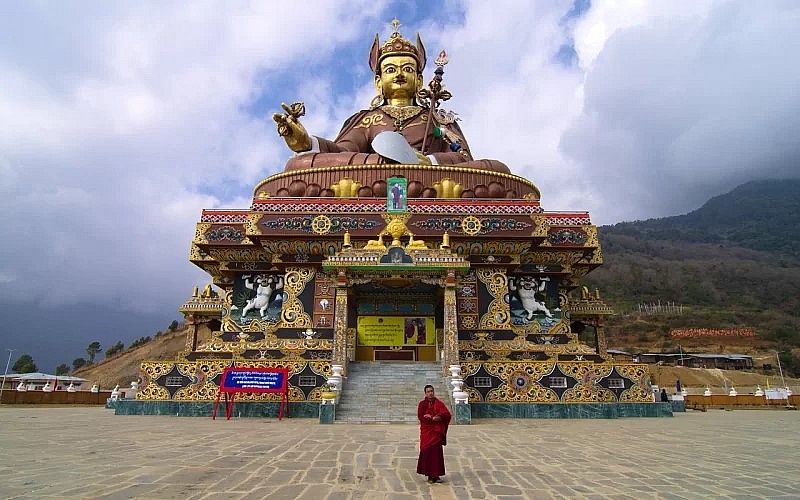The Lotus-Born Master: Echoes of Padmasambhava in Bhutan and Tibet
 |
In the vast landscape of Buddhist literature, the figure of Padmasambhava, also known as Guru Rinpoche, stands as a towering beacon of spiritual wisdom and guidance. His presence in the literary traditions of Bhutan and Tibet is as profound as it is diverse, encompassing the realms of history, mythology, philosophy, and folklore. This article embarks on a comparative exploration of Padmasambhava’s depictions in Bhutanese and Tibetan literature, highlighting cultural nuances, shared narratives, and the unique ways each tradition embraces the beloved “Lotus-Born Master.”
The chronicles of Padmasambhava are intricately woven into Bhutanese literature, reflecting the guru’s crucial role in establishing Buddhism in Bhutan. He is portrayed as a divine figure who tamed local deities and demons, converting them into protectors of the Dharma. In the ‘Bumthang Chö’, a text of ancient Bhutanese verse, Padmasambhava’s miraculous deeds are narrated with poetic grace, revealing a narrative style rooted in Bhutan’s oral storytelling tradition.
In contrast, Tibetan literature presents a more detailed biography of Padmasambhava. The ‘Padma Thangyig Serteng’, part of the Tibetan Terma tradition, provides a comprehensive account of the guru’s life, teachings, and spiritual conquests. The narrative is replete with episodes of his mystical encounters, demonstrating the influence of Vajrayana iconography and Tibetan visionary literature.
One notable divergence between the Bhutanese and Tibetan depictions lies in their emphasis on different aspects of Padmasambhava’s life. Bhutanese literature often portrays the guru’s interactions with local spirits, emphasizing his role in the spiritual transformation of Bhutan’s landscape. On the other hand, Tibetan texts focus more on his teachings and spiritual practices, highlighting his contributions to the development of Vajrayana Buddhism.
However, there are also striking parallels. In both traditions, Padmasambhava is regarded as a saviour figure. His journey is depicted as a spiritual quest, overcoming numerous trials to spread the teachings of Buddhism. The guru’s Eight Manifestations, symbolizing his different aspects and activities, is also a common theme across both Bhutanese and Tibetan narratives.
The portrayal of Padmasambhava’s consorts also provides an exciting area of comparison. The Bhutanese Yeshe Tsogyal narrative, found in texts like ‘The Biography of Yeshe Tsogyal’, emphasizes her role as the guru’s spiritual partner and a wisdom dakini. In Tibetan literature, her role is expanded further, with detailed descriptions of her own spiritual journey and enlightenment.
While Bhutanese and Tibetan literature offer distinct portrayals of Padmasambhava, they are united in their reverence for the Lotus-Born Master. These narratives, despite their cultural differences, embody a shared aspiration: the transmission of the profound wisdom of Buddhism through the life story of one of its most revered figures.
Understanding these similarities and differences deepens our appreciation of the richness of Buddhist literature and the diversity of cultural perspectives within it. As we journey through the words and worlds of these texts, we find ourselves walking alongside Padmasambhava, sharing in his enlightenment, and appreciating the depth of his legacy in Bhutanese and Tibetan literary traditions.
Recommended
 Economy
Economy



